Foundation Repair In Rosharon, Texas
Rosharon is an unincorporated community that is located in part in both Brazoria and Fort Bend Counties. It is approximately 17 miles south, southwest of downtown Houston and is considered part of the Houston metropolitan area. Rosharon covers a land area of approximately 3.2 square miles.
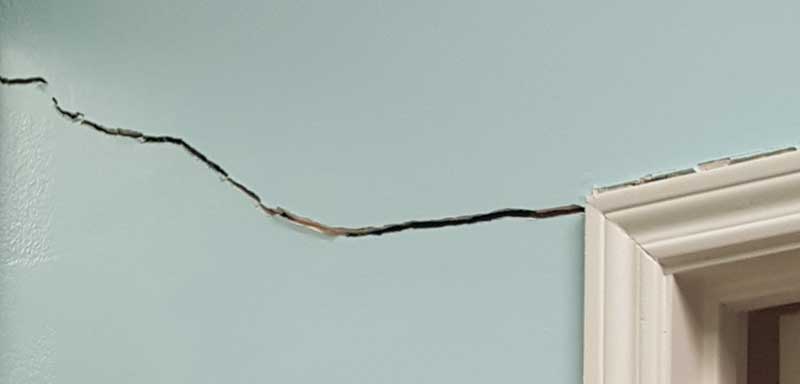
The more expensive neighborhoods in Rosharon are Rosharon North, Southern Colony, Oak Manor Estates, Bonney, and Rosharon Northeast. Other neighborhoods are Sterling Lakes, Seven Oaks Ranch, Chenango Ranch, Lakes of Savannah, Glendale Lakes, Coffee Lake, Lindell Estates, Cold River Ranch, Sun Creek Ranch, Sierra Vista, and Sun Creek Estates.
Unfortunately Rosharon is located in a geographic area that consists of clay soils. This is unfortunate because clay soils absorb water and expand in volume during wet weather and shrink in volume during dry weather. This seasonal process of expansion and contraction repeats itself every year and puts tremendous stresses on concrete slab foundations. The usual result of significant movement of clay soils is the cracking of the slab foundation and damage to the components of the house. The most obvious damage is the cracking of exterior brick walls and interior walls. Damage can also occur with the plumbing system, roof, and framing of the house.
In addition, at Dawson Foundation Repair we are highly critical of home builders. They build home foundations in Rosharon to meet the minimum specifications (too thin). The term we use to describe these slab home foundations is “minimally functional foundations.” Part of the reason for the existence of these thin home foundations is a degree of liability protection given to homebuilders by Texas politicians. Home builders are NOT liable for foundation damage or house damage after 10 years from the day of final construction. After that point in time all foundation repair costs – and associated home damage repair costs – are borne by the home owner.
However, should any home owner have foundation issues during the home builder’s 10 year “warranty” period, we strongly suggest that the home owner hire an independent structural engineer and a lawyer. And we strongly suggest that you demand a High Quality, Time-Tested, Proven, and Permanent foundation repair solution. Do NOT settle for cheap pushed concrete cylinders. The engineers at A-1 Engineering are correct about pushed piles – they are temporary and basically useless.
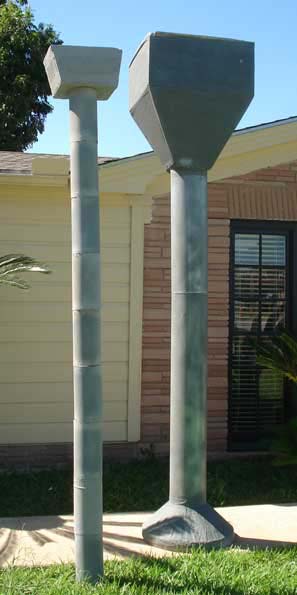
If you guessed the stack of concrete cylinders on the LEFT was the cheaper, faster foundation repair method then you are correct. It is called the “Pushed Pile” method and there are a number of variations of this method. Below is the text from the Foundation Repair Scam page on the A-1 Engineering website.
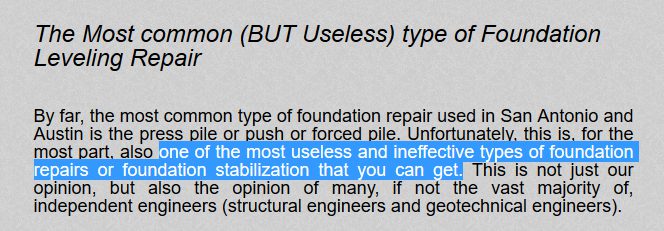
Superior Foundation Repair Method
Bell Bottom Piers offer a time-tested, proven, and PERMANENT solution for damaged concrete slab foundations. It has a Higher Cost but it offers much Higher Quality. The cost is higher because Bell Bottom Piers require more time, more concrete, more steel rebar, and more labor to install. However, once homeowners understand the large gap in quality they ask for Bell Bottom Piers. Below are some of the key advantages of the Bell Bottom Foundation Repair method, which levels and stabilizes your home’s slab foundation.
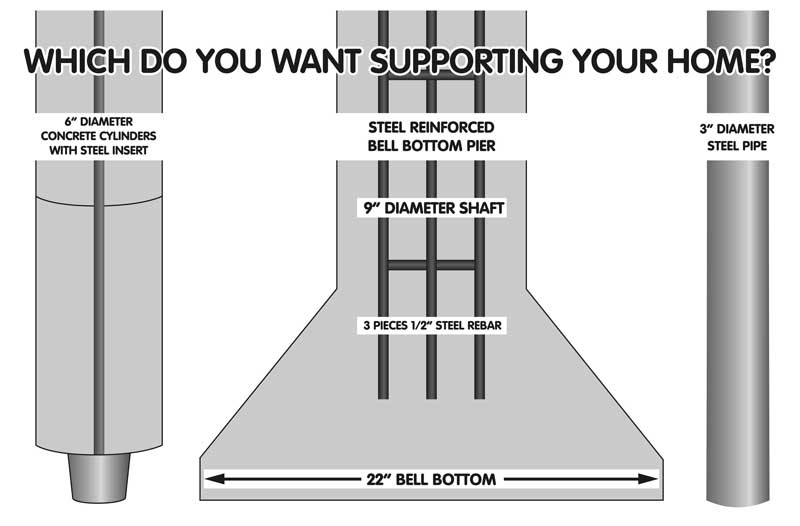
Greater Weight Bearing Capacity
Bell Bottom Piers offer 5 to 10 times more weight bearing capacity. This is a critical factor for 2-story houses. It is also important for garages because heavy trucks and vehicles can cause immediate failure of low quality foundation repair jobs.
Factor of Safety
Factor of Safety is an engineering term. Engineers calculate the maximum load or weight a structure must support and that is called a Factor of Safety of 1. But to insure safety engineers design structures to support 2 or more times the estimated maximum weight. Bridges over water and highway bridges are always designed to support more than the estimated maximum weight that may be placed upon the bridge. In general, the factor of safety for a bridge is greater than 1 and up to 3.
The Factor of Safety for a Bell Bottom Pier is greater than 5. It can be as high as 10. This means a Bell Bottom Pier can support a weight that is 5 times greater – or perhaps more – than what is needed.
Monolithic
Monolithic is a term that indicates single-unit construction. A Bell Bottom Pier is monolithic because it is one piece and the construction process is longer. This contrasts with the Pushed Pile repair method that involves stacking one 6 inch diameter concrete cylinder upon another. These pushed piles can become damaged during the hydraulic installation and / or veer off at an angle if they hit a tree root or rock under the ground surface.
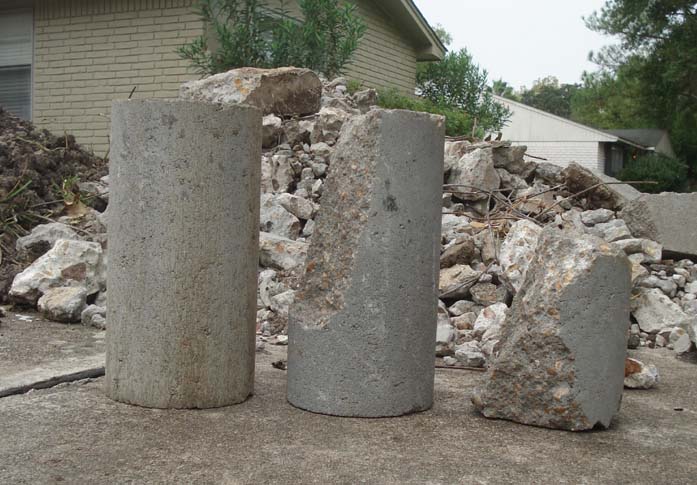
Resistance Against Uplift
The Bell Bottom Pier gets its name from the shape of its foot or the bottom of the pier. The surface area of the foot or footprint of a Bell Bottom Pier is 13 times greater than the surface area of a single 6 inch diameter cylinder. This large footprint increases stability, increases weight bearing capacity, and increases the ability of the Bell Bottom Pier to resist the forces of uplift inherent in clay soils.
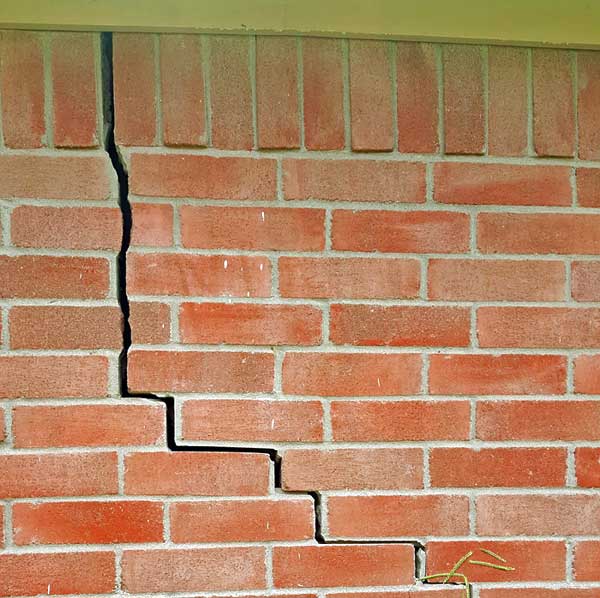
Click the following link to read the Comparison of Methods of Foundation Repair.
